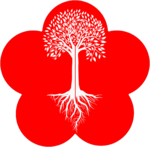About VING TSUN
The Wing Chun system uses a series of forms and exercises to teach you the concepts and principles that we apply to a fight. These forms and exercises build one on top of the other. The concepts and principles you learn in the beginning are passed on through, and utilized in the more advanced levels.
This is why it is so important to have a strong foundation in Wing Chun and a clear and concise understanding of the art.
Why is it important to understand concepts and principles?
Application techniques are infinite. Concepts and principles are finite.
I could show you one technique for one kind of an attack and another technique for another kind of attack but there are infinite variations of attacks. So I would have to teach you every possible way to defend against every possible variation. This would take a lifetime.
Within the construct of those infinite applications there are only a handful of concepts and principles. Concepts are finite.
The Moy Yat Ving Tsun system teaches you to understand these concepts and how to apply them to any situation, allowing you to have an infinite amount of answers at your disposal.
TECHNIQUES
Wing Chun Examples
Sifu Ariel Lugo demonstrates wing chun techniques at his Tampa Florida School.
Pak Sau
Sifu Ariel Lugo demonstrates a few application examples of the Pak Sau (slap block) technique.
Jong Pak Sau
Sifu Ariel Lugo demonstrates some Wing Chun, Jong Pak Sau (wooden dummy slap block) application at his Ving Tsun school in Tampa Florida.
FORMS
1. Siu Nim Tao
Siu Nim Tao has three sections. The main techniques are:
Tun, Bong and Fuk.
This form contains the basic vocabulary of our system.
2. Chum Kiu
Chum Kiu has three sections which train the fist, the horse, and the waist. One must coordinate the body, the hand and the horse to move instinctively. Timing is extremely important. This form trains you to balance your body in motion.
3. Biu Je
There are three parts to the Biu Je form. These embody the concept of Chum Jang- to cut back to the centerline. This is the central concept of Biu Je, to be able to quickly return to the centerline.
4. Muk Yan Jong
(Wooden Dummy)
The Muk Yan Jong, resembles the body of a person with out-stretched limbs. The form is comprised of 108 techniques.
5. Luk Dim Boon Kwun
Long pole, uses the shoulder as the centerline. The power of the long bridge of the two arms is concentrated into one point and is shot out to the different positions called for by the form.

6. Bot Jom Doa
“Eight way chopping knives”. There are eight parts or techniques. This technique is of the highest level in Ving Tsun and is rarely taught because it takes an extreme level of dedication to reach this level of training.
